The former Crown Inn stands facing the Butter Cross, dominating Market Place. Designed by the Nottinghamshire architect TC Hine, the Butter Cross was erected in 1861, in memory of John Hassall, land agent for the lord of the manor. Hassall died in 1859, aged 70. For years after his death, ‘on a certain day in the spring, garlands of primroses decorated the eight pillars of the Butter Cross, brought by people who knew him’.
A print and text about The Butter Cross.
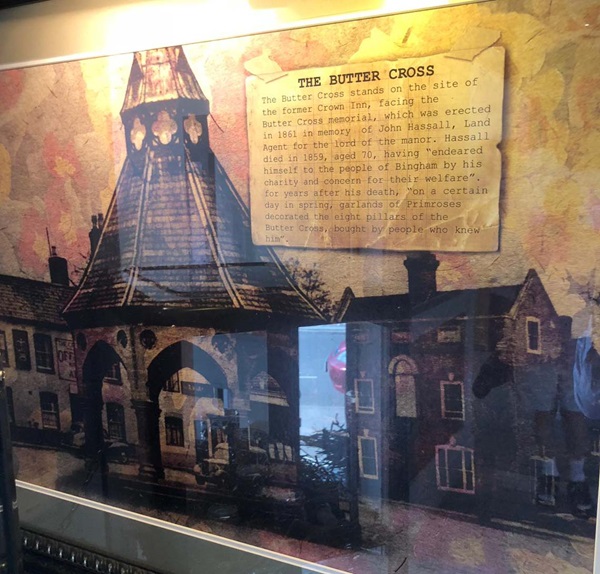
The text reads: The Butter Cross stands on the site of the former Crown Inn, facing the Butter Cross memorial, which was erected in 1861 in memory of John Hassall, land agent for the lord of the manor. Hassall died in 1859, aged 70, having “endeared himself to the people of Bingham by his charity and concern for their welfare”. For years after his death, “on a certain day in spring, garlands of primroses decorated the eight pillars of the Butter Cross, bought people who knew him”.
A photograph of Walker and Sons, Market Place Bingham, 1900.
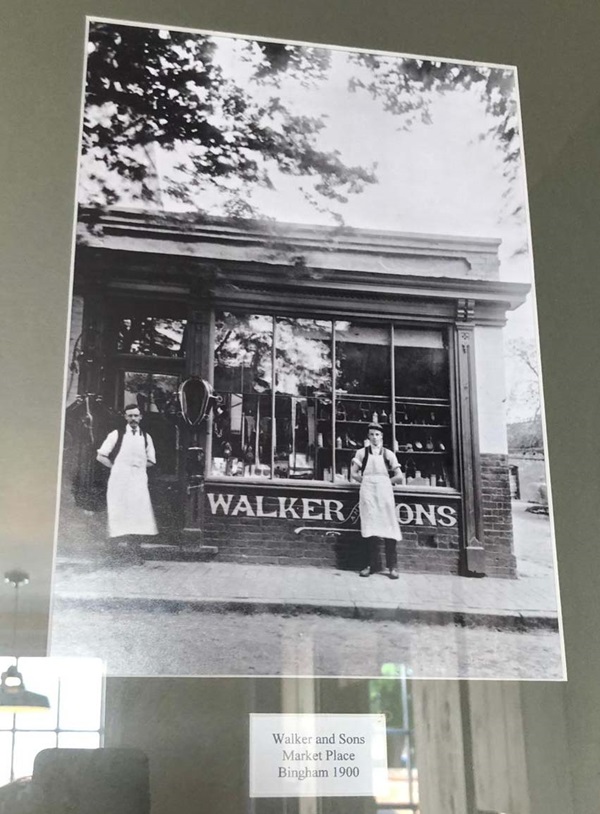
A photograph of Market Place, Bingham.
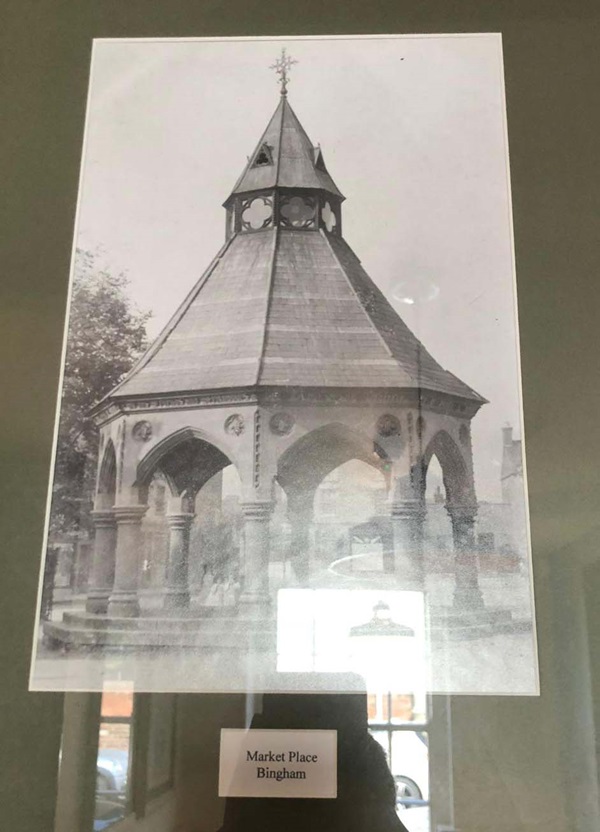
Prints and text about farming in Bingham.
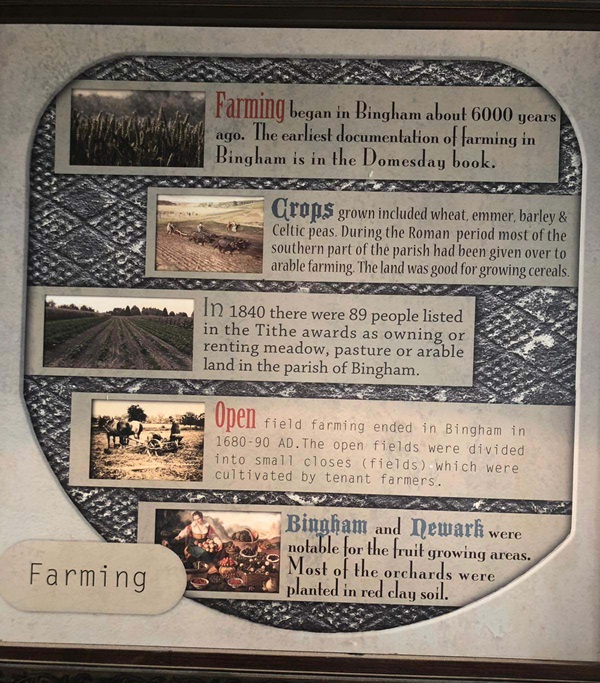
The text reads: Farming began in Bingham about 6000 years ago. The earliest documentation of farming in Bingham is in the Domesday book.
Crops grown included wheat, emmer, barley & Celtic peas. During the Roman period most of the southern part of the parish and been given over to arable farming. The land was good for growing cereals.
In 1840 there were 89 people listed in the Tithe awards as owning or renting meadow, pasture or arable land in the parish of Bingham.
Open field farming ended in Bingham in 1680-90AD. The open fields were divided into small closes (fields) which were cultivated by tenant farmers.
Bingham and Newark were notable for the fruit growing areas. Most of the orchards were planted in red clay soil.
Inspiration for these sculptural light fittings is taken from the rich farming history in Bingham.
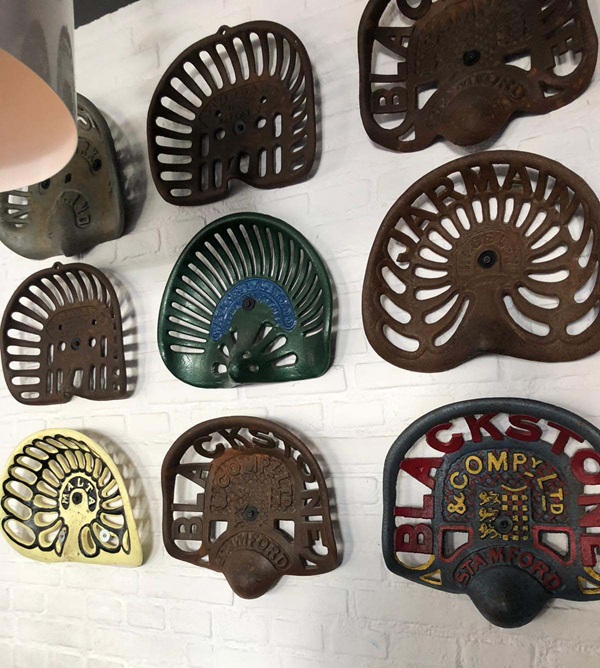
External photograph of the building – main entrance.
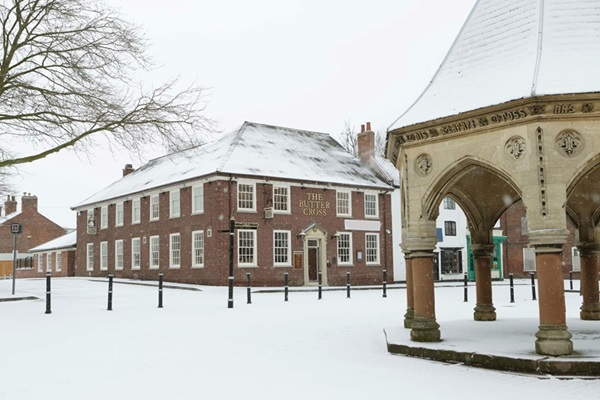
If you have information on the history of this pub, then we’d like you to share it with us. Please e-mail all information to: pubhistories@jdwetherspoon.co.uk